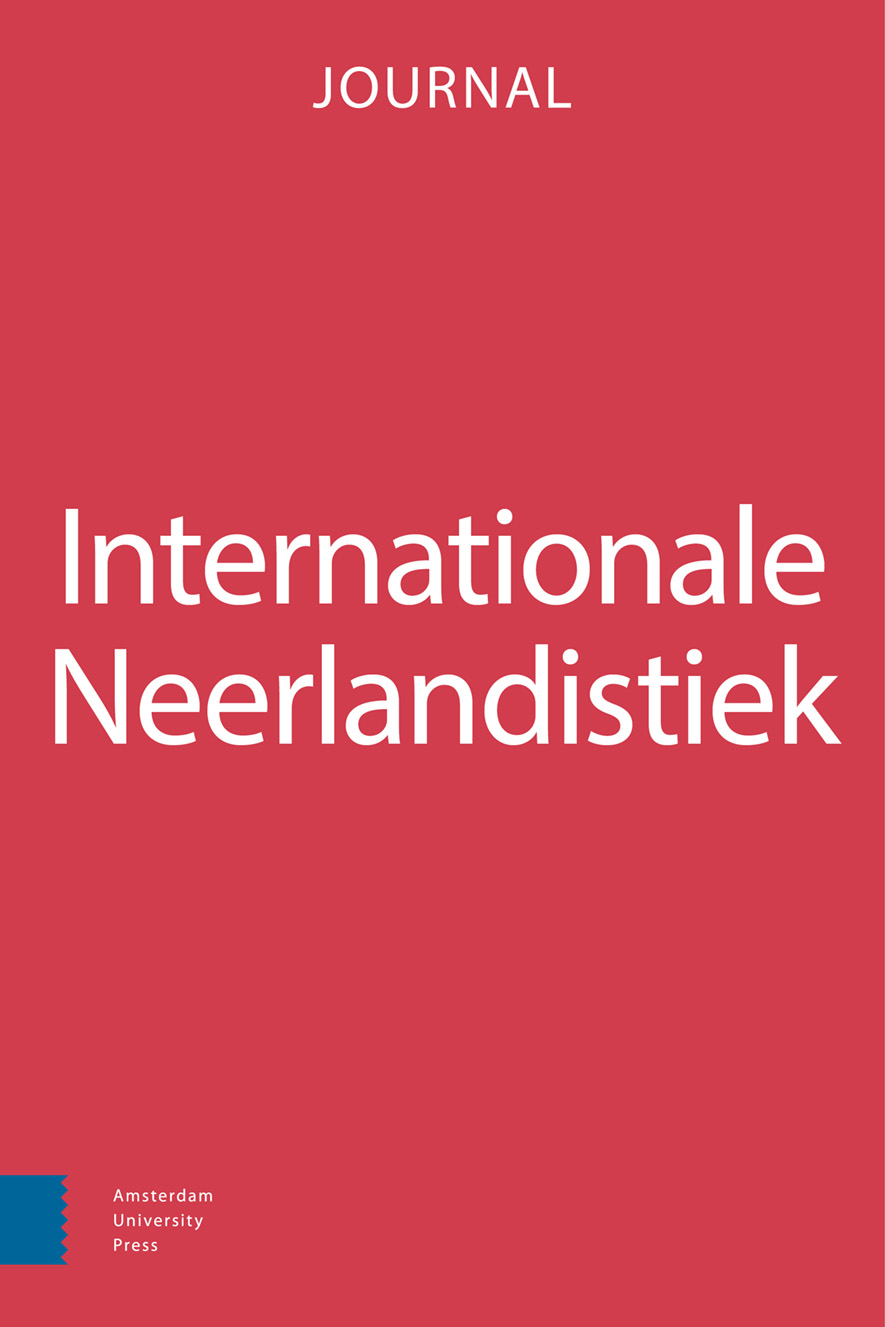- Home
- A-Z Publications
- Internationale Neerlandistiek
- Previous Issues
- Volume 56, Issue 2, 2018
Internationale Neerlandistiek - Volume 56, Issue 2, 2018
Volume 56, Issue 2, 2018
Language:
English
-
-
oa Met Ot en Sien naar Indië
More LessAuthors: Amalia Astari & Rick HoningsAbstract Ot and Sien are the main characters of the famous Dutch children’s book Het boek van Ot en Sien [The Book of Ot and Sien] (1906), written by Hindericus Scheepstra and (assisted by) Jan Ligthart. Less known is the fact that in 1911, an edition for the Dutch reading lessons in the Dutch East Indies was published: Ot en Sien in Nederlandsch Oost-Indië [Ot and Sien in the Dutch East Indies] (1911). Both the stories an Read More
-
-
-
oa Over het verschil in evidentialiteit tussen denk ik en dacht ik
More LessAuthors: Laura Griffioen, Helen de Hoop & Gijs MulderAbstract This paper characterizes the difference in evidentiality between two parenthetical constructions in Dutch, denk ik ‘I think’ and dacht ik ‘I thought’. On the basis of a qualitative corpus study of spoken Dutch, in which we systematically compare utterances with evidential denk ik ‘I think’ to their counterparts with dacht ik ‘I thought’ and vice versa, we argue that the difference between the two constructions can be analyz Read More
-
-
-
oa Een nieuwe visie op verhalen
More LessAbstract In 1996, Monika Fludernik published the book Towards a ‘Natural’ Narratology in which she introduces a new narratological model. The ‘natural narratology’ mainly deals with the way people process narratives on a cognitive level. According to Fludernik, the cognitive frames by which human beings impose narrativity on certain types of discourse, are grounded in real-life, i.e. ‘natural’, experiences. Such an assu Read More
-
Volumes & issues
Most Read This Month
Article
content/journals/18769071
Journal
10
5
false
en


